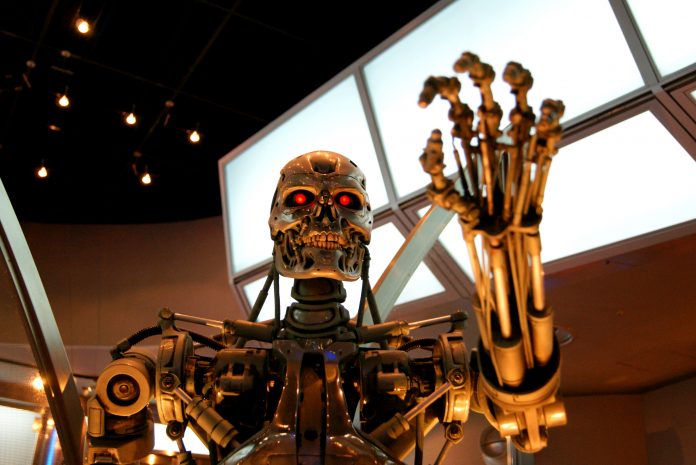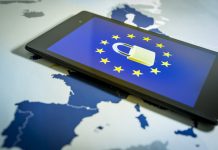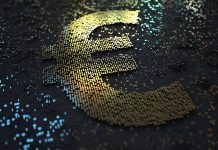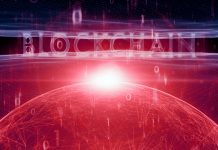In this article, the increasing power of Blockchain, the Internet of Things and Artificial Intelligence are explored in our ever-evolving modern world
The events of annus horribilis 2008 changed the world forever. The change was dubbed the “New Normal” and in turn gave rise to shifts in economic and political power which would have been considered the stuff of fantasy fiction as 2008 came to a close.
Fast forward 10 years. Shifts in the financial tectonic plates apart, we have seen the rise and rise of social media as the facilitator of both social and political change, the migration of computing power from deskbound PCs and laptops to mobile devices and data migrating from earth-bound hard disks to the cloud. Social media, mobile and cloud have now become the new technological norm and while all three will continue to flourish and develop, the next 10 years will see technological innovation dominated by three new additions to the line-up of defining digital technologies. They are Blockchain, Artificial Intelligence and the Internet of Things.
It is worth noting that each of these technologies have been around for quite a while, at least in terms of the relatively short timeline of digital computing. AI, based on the primitive computing of the day, emerged as a defined academic discipline in 1956. The first example of IoT was an internet-connected Coke machine in 1982. The structure of Blockchain was first conceived in 1991.
Why have these rather ancient technologies now come into prominence around the same time? The answer is the combination of a huge increase in available computing power of individual devices (and even more vast power with these devices forming peer-to-peer networks) and the equally vast proliferation of data and its availability. These two factors have created a new digital renaissance.
While all three of these technologies deliver standalone functionality, each has the potential to interact with either or both of the other two. Paradoxically, this complementarity arises from the fundamentally different characteristics of each of the three technologies.
Blockchain is an enabling technology in that it defines protocols for decentralised databases that allow task-specific applications to deliver with (as yet) unhackable security, resilience and trust. It is an enabling technology in the same way as TCP/IP enabled email and the world wide web to gain global acceptance and to form the foundation of the digital economy. Many believe that Blockchain will have similar or even bigger impact than TCP/IP.
Artificial intelligence, on the other hand, is task-specific software with the ability to modify the way its algorithms perform as a result of previous outcomes. This is sometimes called “machine learning” although this just is one sub-field of AI which sits along other methodologies such as artificial neural networks. The result is the software – or the devices and machines in which it is embedded – seems to be imbued with intelligence. The operative word here is “seems”, although the degree of sophistication already achieved by advanced AI systems can now outperform the results of expert human counterparts.
Gartner’s definition of the Internet of Things is a network of physical objects that contain embedded technology to communicate and sense or interact with their internal states or the external environment. Nest, Apple Watch and your smartphone are all part of and vectors for the IoT.
The bringing together of Blockchain, AI and IoT is still largely in the development stage but there are already a significant number of real-world examples of combinations of the three technologies.
From example, in the case of AI and IoT, Rolls-Royce launched in February 2018 its IntelligentEngine vision with an aircraft engine that is “connected, contextually aware and comprehending.” This is based on advanced data analytics of the real-time output of thousands of aircraft engines and AI using machine learning. Another example is Microsoft’s use of AI in providing its ScanDiags service that automates MRI interpretation and documentation. Diagnostic outcomes now are said to be far more accurate than those produced by specialist MRI radiologists.
There are plenty of theoretical proposals for the bringing together of Blockchain and AI but examples of practical implementation are thin on the ground. Conceptually, at first sight, Blockchain and AI appear to be strange bedfellows where Blockchain is by definition decentralised whereas centralisation in the form of specific task focus is a key characteristic of AI.
In June 2018, at the Brains and Chains conference in New York, Matt Turck, a managing director of US venture capital firm First Mark, identified what he described as “two big ideas” for the intersection of AI and Blockchain:
- Decentralised AI marketplaces
- AI networks and decentralised autonomous organisations.
The Decentralised AI marketplaces turn out not to bring together Blockchain and AI in a synergistic combination but simply use a Blockchain platform for the management or access to AI services. These services range from focus on specific applications (for example SingularityNET) to betting on stock market movements. In the latter case, Numerai is an artificial intelligence hedge fund based on the premise “because Numerai abstracts its financial data, data scientists do not know what the data represents and human bias and overfitting are overcome”. Perhaps a blindfold, a pin and a list of FTSE 100 constituents might be to do the job just as well. A review of the various decentralised AI marketplaces shows one common characteristic -the use of crypto-currencies and tokens. Caveat investor should be the watchword for this sector.
The second category of AI networks and Decentralised Autonomous Organisations looks more promising. Matt Turck’s premise is that AI-driven bots could be provided with a Blockchain-based organisational model “to help the various AI bots cooperate in a transparent manner”. Fetch AI is cited as an example of this. Its website claims it has “built the world’s first truly smart ledger, allowing data to act autonomously. Using machine learning and AI technology, we enable data to cooperate, solving problems instantly and presenting answers directly to you”.
An example of this second big idea category is Botchain – “a decentralised identity and audit ledger for autonomous AI agents”. Blockchain and autonomous AI agents (aka “smart bots”) are the basis for the concept of AI-powered Decentralised Autonomous Organisations – or “AI DAO”.
This is where it gets scary because the underlying idea is that an AI DAO could be a decentralised organisation entirely run by machines with no or limited human intervention.
In these circumstances, AI, Blockchain and IoT would truly come together and at that point, the smart bots could take over. The decentralised nature of the infrastructure means there is no off switch. Skynet becomes reality. Hopefully, it’s just a coincidence that “ai dao” in Mandarin means “grief”.
Back to reality, Blockchain, AI and IoT over the next ten years individually and in combination will have a huge impact on both the global economy and the way we live. As with their predecessor defining digital technologies, the new digital renaissance technologies will bring significant positives along with new challenges, particularly in the social and political arenas.
From an economic point of view, the digital renaissance technologies will deliver huge productivity gains which will be reflected in continued strong growth in the global economy with emerging economies getting disproportionate benefit as there will be less legacy infrastructure to hamper early adoption.
All three of the new renaissance technologies will bring about major changes in the way work and processes are carried out, with the elimination of whole swathes of activity previously carried out by humans or the activity being carried out by smart machines, bots or smart processes.
This will mean significant change in the nature of work and with that, social and political change. In many respects, the major challenges for the future will be how this social and political change is managed rather than the harnessing of the new renaissance technologies.












Blockchain for IoT is an interesting area for distributed trust between devices and the entities they interact with. However, security itself can be about the IoT device being tampered with in terms of transacting with other entities as well as being compromised itself leading to lateral movement in the enterprise.
Thanks